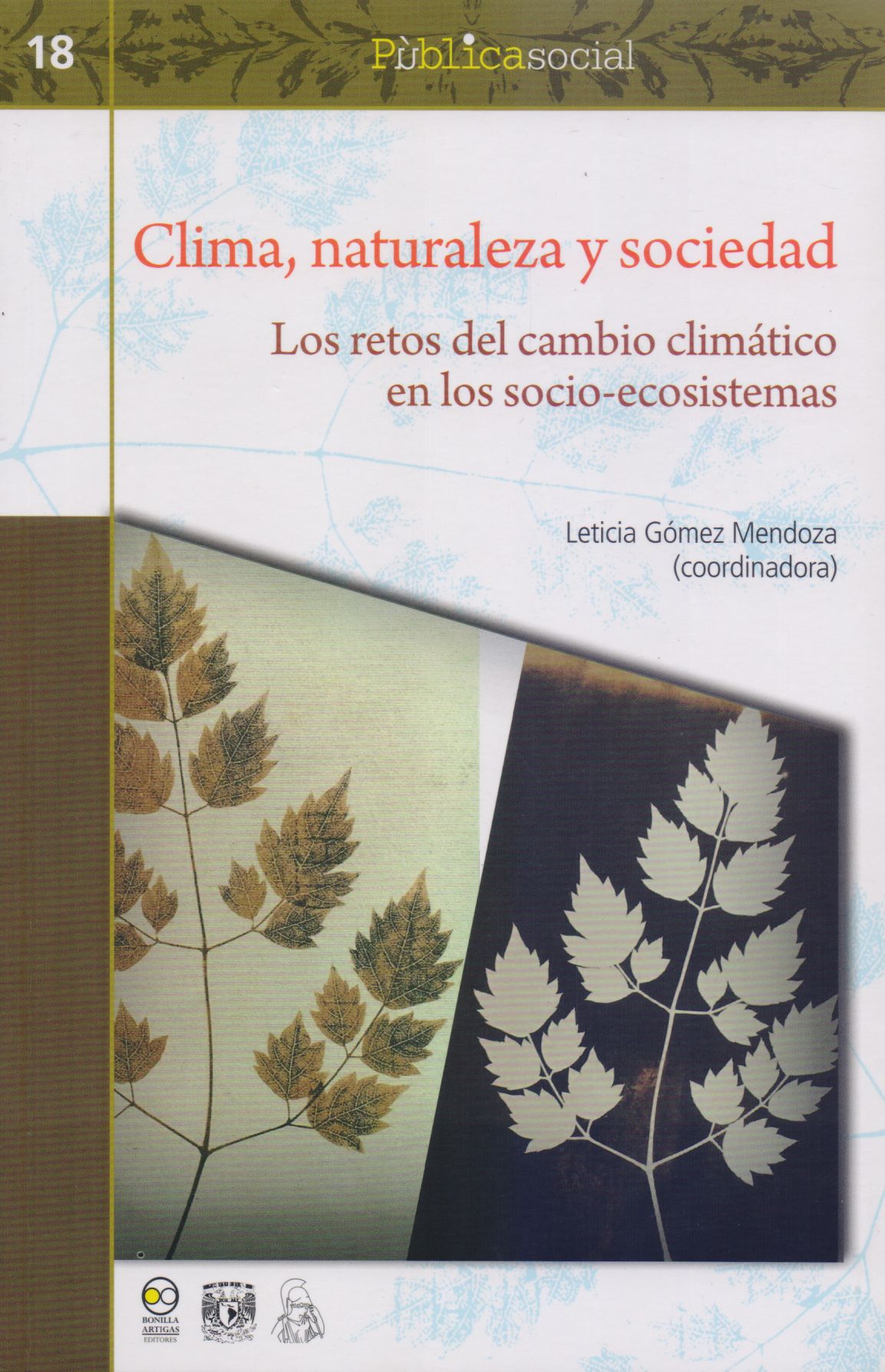Libros relacionados
 |
Repensando la Sostenibilidad Desde las Humanidades y las Ciencias Sociales: Defi Echenberg, Margo / García-González, Dora Elvira (Editoras) Bonilla Artigas Editores |
 |
Clima, Naturaleza y Sociedad: los Retos del Cambio Climático en los Socio-Ecosis Gómez Mendoza, Leticia (Coord.) Bonilla Artigas Editores |
 |
Plows, Plagues, And Petroleum: How Humans Took Control Of Climate Ruddiman, William Princeton University Press |
 |
Jóvenes Universitarios y el Cambio Climático, Los González Gaudiano, Edgar J. Y Maldonado González, Ana Lucía Universidad Veracruzana |
 |
Changing Climate Politics; U. S. Policies And Civic Action Yael Wolinsky-Nahmias Sage Publications, Inc. |
 |
A Dictionary Of Climate Change And The Environment R. Quentin Grafton , Harry W. Nelson , N. Ross Lambie , Paul Edward Elgar Publishing |


|
Título: Assessing Vulnerability To Global Environmental Change | |
| Autor: Patt; Schroter; Klein; de la Vega-Leinert | Precio: $942.50 | |
| Editorial: Earthscan Publications, Ltd. | Año: 2011 | |
| Tema: Cambio Climatico, Global | Edición: 1ª | |
| Sinopsis | ISBN: 9781849711548 | |
| Assessing the vulnerability of human populations to global environmental change, particularly climate change, is now the main imperative of research and international action. However, much of the research into vulnerability is not designed to feed directly into decision making and policy, creating a gap between the knowledge created by researchers and what is required by decision makers.
This book seeks to rectify this problem and bridge the gap. It discusses vulnerability as the central theme and brings together many different applications from disaster studies, climate change impact studies and several other fields and provides the most comprehensive synthesis of definitions, theories, formalization and applications to date, illustrated with examples from different disciplines, regions and periods, and from local through to regional, national and international levels. Case study topics cover sea level rise, vulnerability to changes in ecosystem services, assessing the vulnerability of human health and "double exposure" to climate change and trade liberalization among other issues. Research outcomes stress that science-policy dialogues must be transparent to be effective and concentrate on a mutual understanding of the concepts used. A key research finding is that the most useful information for decision makers is that which shows the separate causes and drivers of vulnerability, rather than presenting vulnerability in an aggregated form. The book concludes with a unifying framework for analyzing integrated methodologies of vulnerability assessment and guiding how research and policy can be linked to reduce vulnerability. |
||
Librería Bonilla SA de CV © Todos los derechos reservados. 2019
Última actualización: Jul 2019




